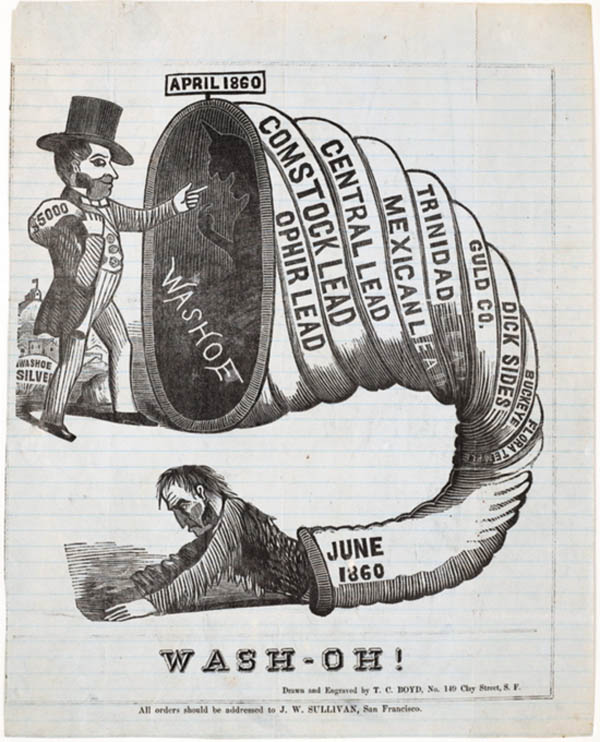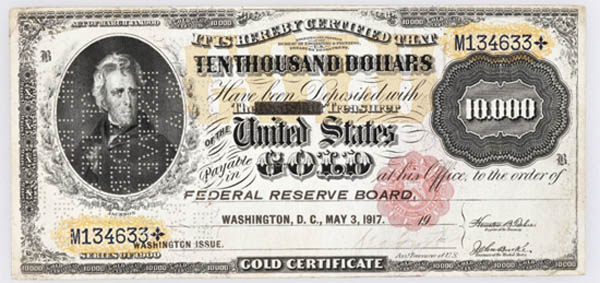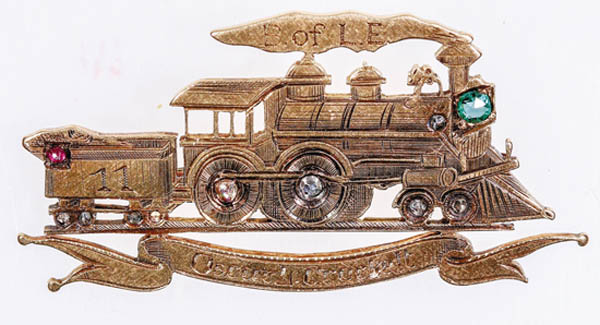Earliest Known Comstock Lode Mining Document From 1859 Sells For $16,875
Over 2,000 Lots Of Western Americana Sold In Many Categories, Including Mining, Numismatic, Railroadiana, Native Americana And More
May 05, 2023
An historic document from 1859, dating to the very beginning of the Comstock Lode silver rush in the U.S. and including mention of the most important mining claim, the Ophir, sold for $16,875 at a four-day Big Bonanza auction held March 30 to April 2 by Holabird Western Americana Collections LLC, online and live in Holabirds Reno, Nev., gallery. The Comstock Lode was a lode of silver ore located under the eastern slope of Mount Davidson, in Virginia City, Nev. (then western Utah Territory). It was the first major discovery of silver ore in the United States and was named after American miner Henry Comstock. The discovery, in 1859, sparked a big silver rush of prospectors to the area, all scrambling to stake their claims. The document, a handwritten deed on blue paper, was datelined Ophir Diggings, Utah Territory, U.S., Sept. 17, 1859. Just 11 days later, the San Francisco Daily Alta California would announce a name change from Ophir Diggings to Virginia City. The document also mentioned the Comstock Lodes Founding Fathers (Comstock, McLaughlin, Osborn, Penrod and Walsh). The auction overall contained over 2,000 lots in many categories that included mining, philatelic, numismatic, railroad, Native Americana and more. Since the auction featured part one of what Fred Holabird called the best Comstock mining collection ever to hit the market, the auction name was chosen to honor the Big Bonanza ore discovery in Virginia City, Nev., made in 1873. Part one focused on mining stock certificates, ore specimens, ephemera and publications. The session also featured a spectacular Comstock Wash-Oh! illustrated lettersheet from 1860, drawn and engraved by TC Boyd (San Francisco) and with a vignette showing a prospector (or mine investor) about to meet the devil in a cornucopia ($5,750). Ore specimens included a 55-pound boulder of Comstock silver-gold ore, reportedly found in the basement of the Virginia City, Nev., Bonanza Club in the 1980s, ($4,375), and a cut and polished slab of gold-in-quartz ore from Goldfield, Nev. (Esmeralda County), ($3,500). Wyatt and Virgil Earp both spent time in Goldfield. Among other featured categories were railroadiana and steamship (including railroad and steamer passes and transportation ephemera); bottles, brewing and saloon items; and general Americana (including political, jewelry, musical instruments, tobacco and gaming, sports, miscellaneous). Railroad and steamer ship collectibles were a big hit with collectors. Top lots included an 1870 Central Pacific Railroad pass No. 511, issued in New York for travel Going West to Rev. Henry Ward Beecher and his wife and signed by CP Huntington, as vice-president of Central Pacific Railroad of California and one of its four founders, which sold for $3,875. An early, unissued 1859 pass for the Great Northern Railway (which operated in Ontario 1853-82), with a beautiful design and vignette of a train crossing a bridge, sold for $1,250. A Brotherhood of Locomotive Engineers pin badge with six stones (an emerald, a ruby and four diamonds), issued to Oscar L. Crockett, a conductor from 1873-91, realized $1,625. Day two featured art, militaria and firearms, and stocks and bonds (to include mining, featuring the Comstock collection, railroad and miscellaneous), for a total of 548 lots. Old, visually arresting stock certificates were what bidders coveted, including a rare stock certificate No. 9 for the Colorado-Philadelphia Reduction Company, dated Aug. 14, 1899, in the amount of 33,250 shares, which went for $2,125. A stock certificate No. 12 for the Cripple Creek and Colorado Springs Railroad Company, issued for one share in 1925 with a visual locomotive vignette, brought $750. Day three featured Native Americana, numismatics (including Nevada banknotes), and philatelic (Express and U.S. covers, U.S. stamps, and foreign stamps and covers). A group of 23 mostly canceled Columbian Expo stamps from around 1893, in denominations ranging from one cent to five dollars, overall a nice complete set, realized $3,375. A U.S. gold piece struck at the Philadelphia mint in 1947 for the Arab American Oil Company (ARAMCO), as payment to the Saudi Arabian government for its oil rights, changed hands for $2,770, while a gold coin minted in Santiago, Chile, in 1792 for 8 Escudos, a bust of Charles III on the obverse, one of 38,000 minted, made $2,250. For additional information, call Fred Holabird at 775-851-1859 or 844-492-2766 or email fredholabird@gmail.com.









SHARE
PRINT